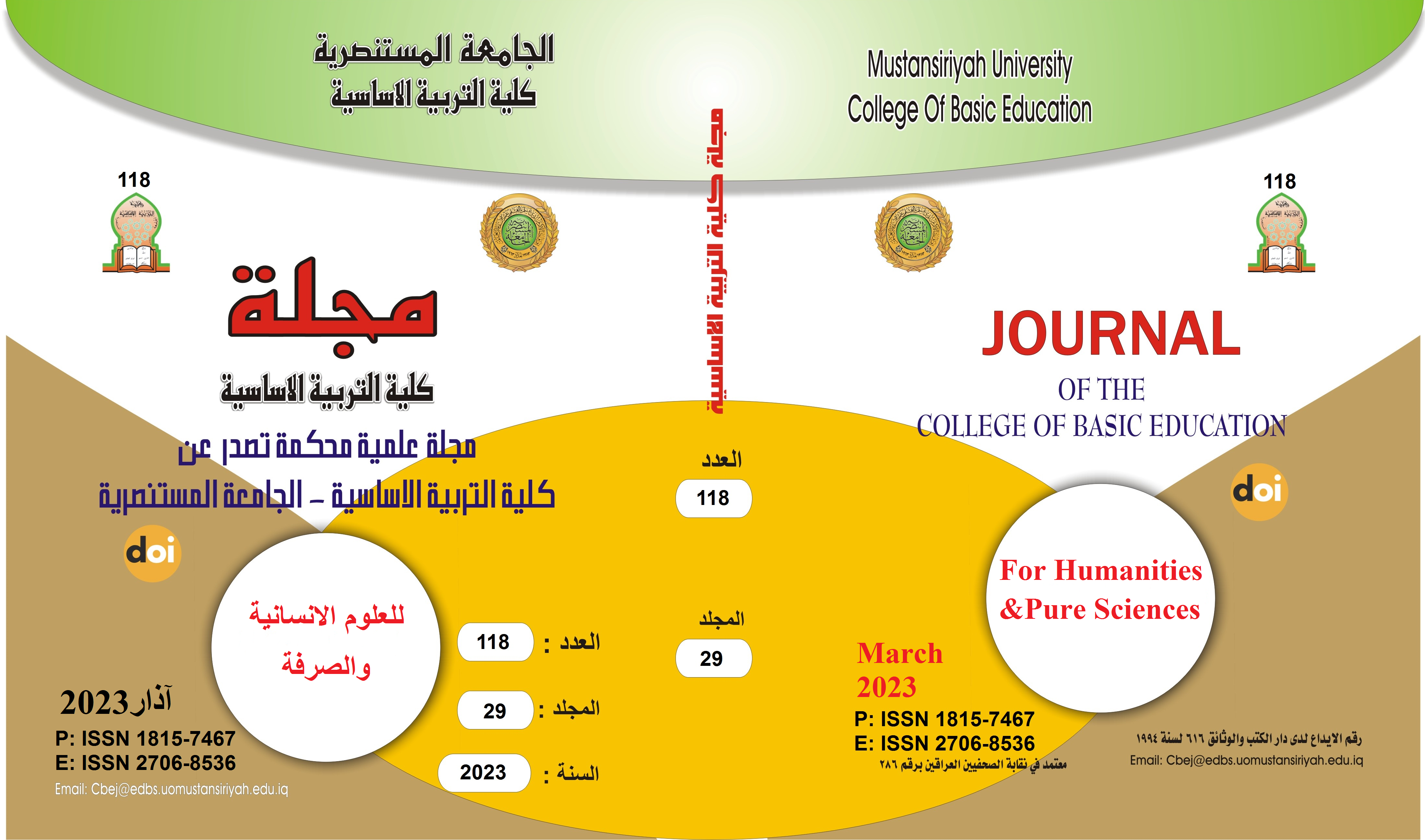The effect of using the mind maps strategy in developing mathematical communication skills of primary school students
Main Article Content
Abstract
Summary of the research:
The current research aims to identify the effect of using the mind maps strategy on developing mathematical communication skills among primary school students, and to achieve this goal the following three zero hypotheses were derived:
1- There is no statistically significant difference at the significance level (0.05) between the average scores of the students of the experimental and control groups on the post-mathematical communication skills test as a whole.
2- There is no statistically significant difference at the level of significance (0.05) between the mean scores of the experimental group and the control group students in each of the mathematical communication skills that constitute the mathematical communication skills test.
3- There is no statistically significant difference at the level of significance (0.05) between the mean scores of the experimental group students on the pre and post mathematical communication skills test.
In order to verify the validity of the three hypotheses, a mathematical communication skills test was built, and its validity and reliability were confirmed. The researcher used the experimental approach according to a semi-experimental design with two experimental and control groups, with a post-test. The sample was divided into two groups: experimental and control, the number of students in the experimental group (30) and the number of students in the control group (30). Previously, the mathematical communication skills test was applied to the two groups, and the equivalence of the two groups was proven, the mathematical communication skills test was applied to the two groups, and the statistical program (SPSS) was used to test the hypotheses, and the results showed that there is a statistically significant difference at the level of significance (0.05) between The mean scores of the students of the experimental and control groups in the post-mathematical communication skills test as a whole and in favor of the students of the experimental group with a significant effect, as well as the presence of a statistically significant difference at the significance level (0.05) between the mean scores of the students of the experimental group and the control group in each skill of the mathematical communication skills that made up the test Mathematical communication skills at Maharat:
1- Description and organization of mathematical relationships and situations, in writing.
2- Representation of sports relations and situations in different forms.
3- Evaluation and analysis of mathematical discussions and issues presented by others and responding to them correctly.
4- Reading in a coherent and clear manner of mathematical phrases to others.
5- The optimal use of mathematical language for both description and expression of mathematical ideas clearly.
In favor of the experimental group students, the strategy of mental maps (the independent variable) had a significant impact on each of the skills (writing, reading, speaking) of the mathematical communication skills, while its effect was moderate on my skills (acting and listening), as well as the presence of statistically significant differences between The scores of the students of the experimental group on the mathematical communication skills test in the pre and post applications in favor of the students' scores in the post application.
In light of the findings of the research, the researcher recommended the need to use the strategy of mind maps in teaching mathematics as one of the effective strategies in developing mathematical communication skills.
Keywords: mental mapping strategy, mathematical communication skills.
Article Details

This work is licensed under a Creative Commons Attribution-ShareAlike 4.0 International License.
